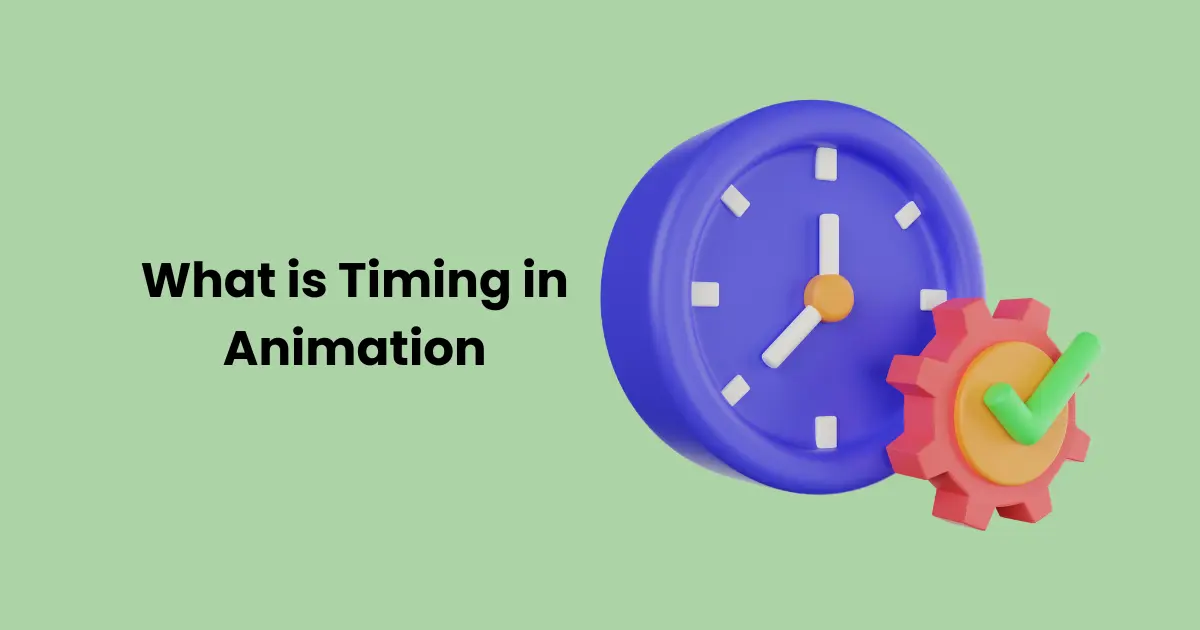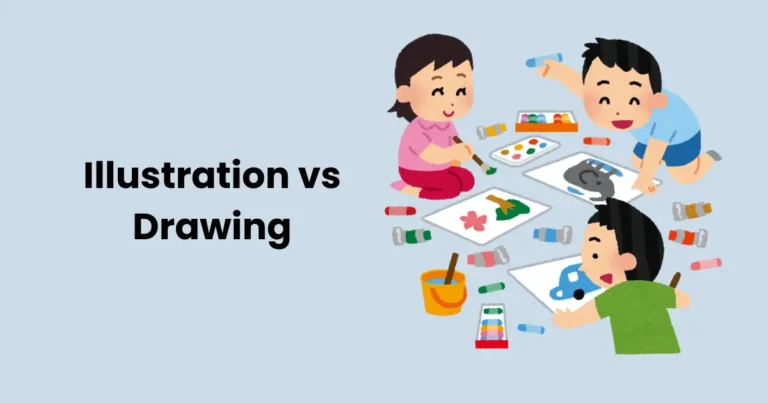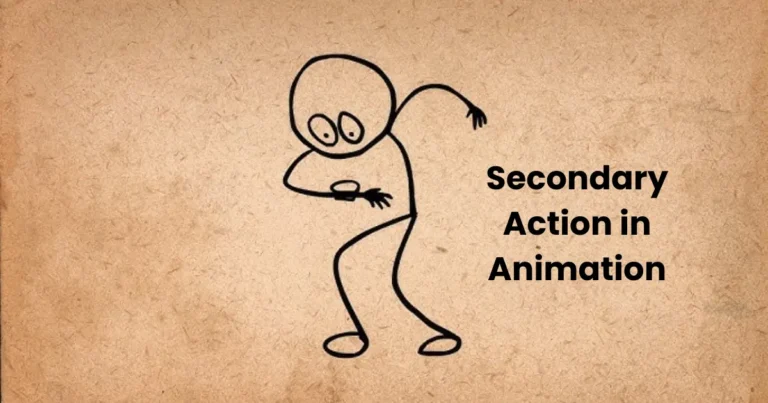What is Timing in Animation | Timing principle and its benefits in Animation

Contents
- 1 The Principles of Timing in Animation
- 2 Factors Influencing Timing in Animation
- 3 Techniques for Mastering Timing in Animation
- 3.0.1 1. Keyframes and Inbetweens
- 3.0.2 2. Mastering Pacing: Fast vs. Slow Timing
- 3.0.3 3. Incorporating Anticipation and Follow-Through
- 3.0.4 4. Timing Arcs for Natural Motion
- 3.0.5 5. Understanding Timing Charts
- 3.0.6 6. Squash and Stretch Timing
- 3.0.7 7. Practice Timing with Simple Animations
- 3.0.8 8. Reference Real-World Movements
- 3.0.9 9. Seek Feedback and Iterate
- 4 Examples of Effective Timing in Animation
- 4.0.1 1. The Lamp Hop in Pixar’s Luxo Jr.
- 4.0.2 2. The Ball Chase in Disney’s Zootopia
- 4.0.3 3. Genie’s Transformations in Aladdin
- 4.0.4 4. Emotional Pause in The Lion King (1994)
- 4.0.5 5. The Bouncing Ball in The Animator’s Survival Kit
- 4.0.6 6. Chase Scene in Tom and Jerry
- 4.0.7 7. Dance Scene in Beauty and the Beast
- 4.0.8 8. Spider-Man’s Leap in Spider-Man: Into the Spider-Verse
- 4.0.9 9. Wall-E’s Interactions in Wall-E
- 4.0.10 10. Fight Sequences in Avatar: The Last Airbender
- 5 Common Mistakes in Timing and How to Avoid Them
- 6 Tips for Improving Timing in Animation
Timing in animation is the foundation of bringing characters, objects, and scenes to life. It defines how actions unfold, the pace of movements, and the rhythm of storytelling, playing a pivotal role in capturing the audience’s attention and delivering emotional impact. Whether it’s a character’s subtle blink or an intense chase sequence, timing in animation determines how realistic or expressive the motion appears.
At its core, timing in animation refers to the spacing and duration of frames in a sequence. This principle helps create the illusion of weight, scale, and personality in animated characters and objects. For example, a heavy object moving slowly conveys mass and resistance, while a lightweight object may move faster and bounce dynamically.
Understanding timing is essential for animators, as it directly influences the visual flow and audience perception. Poor timing can make movements feel awkward or unnatural, while precise timing enhances believability and emotional connection. From traditional hand-drawn animations to modern CGI, timing remains a universal element that ties together the artistic and technical aspects of animation.
The Principles of Timing in Animation
Timing in animation is one of the most crucial principles among the 12 Principles of Animation introduced by Disney animators Ollie Johnston and Frank Thomas. It not only gives a sense of realism but also enhances the storytelling, emotion, and overall impact of the animation. Let’s explore the key aspects of timing and how it contributes to high-quality animation.

1. The Relationship Between Timing and Physics
Timing in animation reflects real-world physics, such as gravity, weight, and inertia. A heavy object falls slowly with a deliberate motion, while a light object moves quickly and bounces. This adherence to physics helps create a believable world for the viewer.
2. Character Expression Through Timing
Every movement, from a character’s blink to their stride, depends on timing to convey personality and mood. For instance:
- Fast, sharp movements suggest excitement, aggression, or urgency.
- Slow, smooth movements evoke calmness, sadness, or contemplation.
3. Emotion and Storytelling
Timing in animation affects how audiences emotionally connect to the story. A dramatic pause, a lingering gaze, or a delayed reaction can heighten tension or deepen emotional impact. Timing ensures that the pacing aligns with the narrative’s tone.
4. Enhancing Clarity with Timing
Good timing in animation ensures that actions are clear and easily understood by the viewer. Overlapping multiple fast motions or extending actions unnecessarily can confuse the audience. Properly spaced movements give each action its moment to shine.
5. Rhythm and Flow
The rhythm of movements is a vital part of timing in animation. Alternating between fast and slow actions creates a dynamic flow that keeps the animation engaging. For instance, quick bursts of action followed by a moment of stillness provide visual relief and emphasize key moments.
6. Impact of Frame Rate
The number of frames used to depict a movement significantly affects its timing. Fewer frames result in quicker actions, while more frames create slower, smoother movements. Adjusting the frame rate helps animators manipulate timing for different effects.
By mastering these principles of timing in animation, animators can create sequences that are not only visually appealing but also emotionally resonant. Proper timing transforms lifeless frames into compelling stories filled with motion and meaning.
Factors Influencing Timing in Animation
Timing in animation is influenced by various factors that determine the speed, rhythm, and emotional resonance of movements. Understanding these factors helps animators craft sequences that are believable, dynamic, and aligned with the narrative. Here are the key elements that influence timing in animation:

1. Frame Rate (FPS)
Frame rate, or frames per second (FPS), dictates the smoothness and pace of an animation. The number of frames used to portray an action directly impacts its timing:
- Lower FPS creates choppy, fast-paced motion (often used in stylized animations).
- Higher FPS results in smoother and more detailed movements (commonly seen in CGI).
Standard animation uses 24 FPS, but variations depend on artistic and technical requirements.
2. Weight and Mass of Objects
The perceived weight of an object influences how it moves.
- Heavy objects (e.g., boulders) require slower timing with deliberate motions to emphasize their mass.
- Light objects (e.g., balloons) move quickly and float with less resistance.
Proper timing reinforces realism and helps audiences understand the physical properties of objects.
3. Character Personality and Movement Style
A character’s personality shapes the timing of their actions. For instance:
- A lively, energetic character may exhibit quick, exaggerated movements.
- A calm, methodical character may move with slower, deliberate timing.
These nuances bring depth to characters and make them more relatable.
4. Emotional Context and Storytelling
Timing in animation plays a critical role in setting the emotional tone and advancing the narrative.
- Quick timing creates urgency or excitement, ideal for action-packed sequences.
- Slow timing adds drama or suspense, making moments feel weighty and significant.
Timing helps animators control how viewers emotionally connect with the story.
5. Anticipation and Follow-Through
Anticipation prepares the audience for an action, while follow-through adds realism to its completion. Both influence timing by ensuring actions feel natural and fluid. For example:
- A character crouching before jumping creates anticipation.
- The trailing motion of their limbs after landing is follow-through.
By balancing these factors, animators can create sequences that resonate emotionally, convey realism, and maintain viewer engagement. Mastering these influences is key to perfecting timing in animation.
Techniques for Mastering Timing in Animation
Mastering timing in animation requires a blend of technical skills and artistic insight. Animators must understand how movement, pacing, and rhythm impact storytelling and audience engagement. Below are key techniques to refine timing in animation:

1. Keyframes and Inbetweens
Keyframes mark the start and end of a movement, while inbetweens fill the transition.
- Use fewer inbetweens for quick, snappy motions.
- Add more inbetweens for slower, smoother movements.
Proper spacing between keyframes determines the speed and style of the animation.
2. Mastering Pacing: Fast vs. Slow Timing
The pacing of movements defines their emotional impact and realism.
- Fast timing conveys energy, urgency, or surprise (e.g., a punch or a jump).
- Slow timing evokes weight, deliberation, or suspense (e.g., a character lifting a heavy object).
Alternate between fast and slow actions to maintain rhythm and audience interest.
3. Incorporating Anticipation and Follow-Through
- Anticipation: Prepares the viewer for an action, such as a character winding up before a throw.
- Follow-through: Shows the lingering effects of the action, like the drag of a cape after a turn.
These principles add depth and realism to movements.
4. Timing Arcs for Natural Motion
Most natural movements follow an arc-shaped trajectory due to the influence of gravity and momentum. Incorporating arcs into your animation helps actions appear smooth and lifelike. For example:
- A ball thrown into the air follows an arc before falling.
- A character’s head movement should align with an arced motion during a nod.
5. Understanding Timing Charts
Timing charts guide animators in spacing frames effectively. They show where to place inbetweens for varying speeds:
- Even spacing creates consistent motion.
- Uneven spacing accelerates or decelerates movements for dynamic effects.
6. Squash and Stretch Timing
Squash and stretch add flexibility and exaggeration to an object or character. The timing of these effects should align with the motion:
- A bouncing ball squashes briefly on impact, then stretches as it rebounds.
- Characters squashing during quick motions emphasizes elasticity and energy.
7. Practice Timing with Simple Animations
Start with basic exercises like animating a bouncing ball, pendulum swing, or simple walk cycle. These foundational practices teach how timing affects weight, speed, and emotion.
8. Reference Real-World Movements
Observe how objects and people move in real life. Record videos or use online resources to study timing for various actions, such as walking, running, or jumping. Applying real-world physics ensures natural and believable timing.
9. Seek Feedback and Iterate
Share your animations with peers or mentors and gather constructive feedback. Use their insights to refine the timing and improve readability and flow.
By practicing these techniques, animators can create visually compelling and emotionally resonant works. Timing in animation is an art that improves with consistent effort, experimentation, and observation.
Examples of Effective Timing in Animation
Timing in animation is an essential aspect that can elevate storytelling, evoke emotions, and create memorable moments. Here are some iconic examples that demonstrate effective timing in different contexts, from emotional storytelling to comedic beats and action-packed sequences.
1. The Lamp Hop in Pixar’s Luxo Jr.
Pixar’s Luxo Jr., the short film featuring the iconic desk lamp, is a masterclass in timing. The lamp’s bounces are timed perfectly to convey weight, personality, and curiosity.
- Why it works: The varying speeds—slower before a jump and quicker during the descent—make the lamp feel alive despite being an inanimate object.
2. The Ball Chase in Disney’s Zootopia
The scene where Judy Hopps chases a thief through Little Rodentia showcases precise timing in action. The shifts between fast-paced chases and comedic pauses emphasize scale and perspective.
- Why it works: Alternating between quick movements for tension and slower, exaggerated reactions for humor keeps the sequence engaging.
3. Genie’s Transformations in Aladdin
Genie’s rapid-fire transformations are a prime example of exaggerated timing in animation. Each transformation is timed to match the humor and energy of Robin Williams’ voice acting.
- Why it works: The quick transitions paired with occasional pauses allow the audience to process the gags without feeling overwhelmed.
4. Emotional Pause in The Lion King (1994)
The moment when Simba discovers Mufasa’s lifeless body is a powerful example of using timing to evoke emotion. The pacing slows significantly, with deliberate pauses that allow the weight of the moment to sink in.
- Why it works: The slow timing contrasts with the frantic action of the stampede, emphasizing grief and loss.
5. The Bouncing Ball in The Animator’s Survival Kit
The classic bouncing ball exercise often taught to animators is a practical demonstration of timing principles. A ball’s motion—how it slows as it ascends, squashes upon impact, and stretches while bouncing away—shows how timing affects the perception of weight and elasticity.
- Why it works: Accurate timing creates a realistic yet stylized portrayal of physics, making the ball appear dynamic and lifelike.
6. Chase Scene in Tom and Jerry
The classic cat-and-mouse chases in Tom and Jerry rely heavily on exaggerated timing. Fast actions like Jerry darting away are juxtaposed with slower, deliberate moments, such as Tom sneaking up.
- Why it works: The timing enhances the comedic effect, with pauses and sudden bursts of action delivering punchlines visually.
7. Dance Scene in Beauty and the Beast
The ballroom scene where Belle and the Beast waltz is an example of timing used for emotional impact. The movements are slow and graceful, perfectly synced with the music.
- Why it works: The slow timing emphasizes romance and elegance, enhancing the emotional connection between the characters.
8. Spider-Man’s Leap in Spider-Man: Into the Spider-Verse
When Miles Morales takes a leap of faith, the scene uses deliberate timing to heighten the impact. The slow-motion moment as he jumps contrasts with the fast-paced fall, creating tension and exhilaration.
- Why it works: The pacing mirrors Miles’ internal journey, making the leap symbolic and visually striking.
9. Wall-E’s Interactions in Wall-E
Wall-E’s movements, especially his cautious curiosity and moments of hesitation, rely on timing to convey emotion without dialogue. For instance, his slow approach to Eve contrasts with sudden, jerky retreats when startled.
- Why it works: The varied timing makes Wall-E relatable and charming, despite being a robot.
10. Fight Sequences in Avatar: The Last Airbender
The series is renowned for its well-timed combat scenes, where movements reflect the nature of each bending style. For example:
- Waterbending: Smooth and flowing, with deliberate timing.
- Firebending: Fast and sharp, with quick bursts of energy.
- Why it works: Timing enhances the distinctiveness of each style, aligning it with the character’s personality and emotion.
These examples highlight how effective timing in animation can transform sequences into impactful moments. Whether through humor, drama, or action, timing adds depth and clarity, making animations resonate with audiences. By studying these examples, animators can learn how to use timing to elevate their own creations.
Common Mistakes in Timing and How to Avoid Them
Timing is one of the most crucial principles in animation, and mistakes in this area can detract from the fluidity, realism, or emotional impact of a scene. Below are common errors animators make when working with timing, along with tips on how to avoid them.

1. Inconsistent Timing
Mistake: Movements with uneven or random timing can appear jerky or disjointed, breaking the flow of the animation.
How to Avoid:
- Plan movements with a timing chart or timeline to ensure consistency.
- Use tools like the Graph Editor in animation software to smooth motion curves.
- Regularly preview your work to identify and correct inconsistencies.
2. Overly Fast or Slow Actions
Mistake: Making actions too fast may confuse the audience, while excessively slow movements can make the animation feel dull.
How to Avoid:
- Adjust the frame rate or spacing of inbetweens to match the desired speed.
- Use real-world references to determine the appropriate pacing for actions.
- Keep the audience’s attention span in mind when timing scenes.
3. Ignoring Weight and Physics
Mistake: Animations that disregard the effects of weight, gravity, and inertia result in unnatural or unrealistic movements.
How to Avoid:
- Study real-world motion to understand how weight influences timing.
- For heavy objects, use slower timing with deliberate acceleration and deceleration.
- For light objects, opt for quicker timing with less noticeable momentum shifts.
4. Lack of Anticipation and Follow-Through
Mistake: Skipping these principles makes actions appear abrupt and less engaging.
How to Avoid:
- Add a few frames of anticipation before the main action to prepare the audience.
- Include follow-through frames that reflect residual motion after the action ends (e.g., a character’s hair settling after a jump).
5. Relying Too Much on Automated Timing
Mistake: Overusing software-generated tweening or motion paths can result in mechanical and lifeless movements.
How to Avoid:
- Customize frame spacing manually for key actions.
- Use motion paths and automated tools as starting points, then refine them for more natural results.
- Add variations to timing to reflect organic movement.
Timing mistakes can disrupt the flow and impact of an animation, but by being mindful of these common errors and implementing practical solutions, animators can create more polished and engaging work. Consistent practice, observation of real-world movements, and effective use of animation tools will help you master the art of timing in animation.
Tips for Improving Timing in Animation
Mastering timing in animation requires a combination of technical knowledge, artistic intuition, and practice. Below are actionable tips to help animators refine their timing and enhance the overall quality of their work.

1. Study Real-World Movements
Why it helps: Observing how objects and living beings move in the real world provides a solid foundation for timing decisions.
- Record videos of yourself or others performing specific actions.
- Analyze slow-motion footage to break down movement into frames.
- Observe how weight, inertia, and speed influence timing.
2. Use Timing Charts
Why it helps: Timing charts allow you to plan the spacing and pacing of frames in a clear and organized manner.
- Sketch a basic chart to map out keyframes and inbetweens.
- Adjust spacing for actions requiring faster or slower movements.
- Include notes for secondary actions to maintain consistent timing.
3. Leverage the 12 Principles of Animation
Why it helps: Principles like slow in, slow out, anticipation, and follow-through directly impact timing.
- Use slow in, slow out for smoother transitions and realistic acceleration or deceleration.
- Add a few frames of anticipation before key actions to prepare the audience.
- Include follow-through to make movements feel complete and natural.
4. Experiment with Frame Rates
Why it helps: Adjusting frame rates can drastically change the feel of your animation.
- Use fewer frames (e.g., animating on 2s) for stylized or exaggerated actions.
- Use more frames (e.g., animating on 1s) for smoother, realistic motions.
- Combine different frame rates within a scene to emphasize key moments.
5. Practice the Bouncing Ball Exercise
Why it helps: This classic exercise teaches the basics of timing, weight, and motion.
- Focus on how timing changes with the ball’s weight and elasticity.
- Adjust the height and speed of bounces to convey realism or exaggeration.
- Apply what you learn to more complex characters or objects.
Improving timing in animation is a skill that develops with consistent practice and observation. By studying real-world motion, leveraging animation principles, and experimenting with software tools, animators can create sequences that are both dynamic and emotionally engaging. Remember, great timing is not just about precision—it’s about storytelling.
Conclusion
Timing in animation is not merely about aligning frames; it’s the backbone of how movement, emotion, and storytelling come to life. Mastering timing requires a deep understanding of physics, weight, pacing, and the subtle interplay between frames. When done right, timing can make an animation feel seamless and captivating, allowing characters and objects to move with purpose and intention. Whether it’s the tension of a slow build-up or the exhilaration of rapid action, timing dictates how viewers perceive and connect with the animation. It bridges the gap between technical accuracy and artistic expression, creating a world that feels alive and compelling.
For animators, improving timing is a journey that blends observation, experimentation, and refinement. By studying real-world motion, practicing classic exercises like the bouncing ball, and leveraging modern animation tools, creators can elevate their work to new heights. Timing isn’t just about frames per second; it’s about how each movement contributes to the narrative and emotional resonance. As you refine your craft, remember that every second of animation is an opportunity to tell a story, evoke emotions, and leave a lasting impression on your audience.






